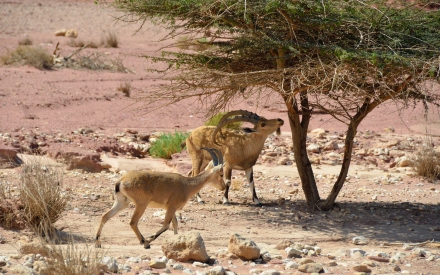
С момента, когда произошла утечка нефти в заповеднике Аврона, компания EAPC неустанно действует в целях реабилитации заповедника. Компания EAPC не жалеет средств для реабилитации заповедника. Она непрерывно приглашает специалистов из других стран и из Израиля для сопровождения этой деятельности, чтобы обеспечить профессиональную и эффективную работу, характер которой наиболее соответствует сложившимся обстоятельствам и местным условиям. Деятельность компании EAPC в заповеднике Аврона началась в день происшествия и завершится после полной реабилитации заповедника. Компания работает в нескольких направлениях:
Прекращение утечки и выкачивание свободной нефти с поверхности земли
Как только стало известно о факте утечки, команды компании EAPC стали круглосуточно работать, чтобы остановить поток нефти и откачать ее с земли – в точках, где нефть собралась, а именно в лужах и каналах.
Почва
В рамках усилий по реабилитации почвы после утечки был принят целый ряд мер, направленных на очищение и облагораживание почвы, так чтобы заповедник мог оставаться местом выращивания растений и жизни животных.
С определенных участков заповедника и прилегающей к нему территории было вывезено более 55,000 тонн загрязненной почвы.
Пилотный проект по очищению почвы
17 декабря 2014 г. компания EAPC и Управление природы и парков Израиля опубликовали совместное заявление для широкой публики, в котором содержался призыв к технологическим компаниям, специализирующимся на очистке почвы, предлагать свои решения по очистке почвы в заповеднике Аврона. Компании, отвечающие начальным условиям, сформулированным Управлением природы и парков Израиля, были приглашены для опытной демонстрации своих программ на ограниченных участках земли, выделенных им для этой цели. В эти дни компания EAPC и Управление природы и парков Израиля производят анализ условий тендера по очистке всей территории заповедников, поврежденной в результате утечки.
Рыхление и увлажнение почвы
В рамках процесса восстановления заповедника производится проверка различных путей его реабилитации. Одним из путей, выбранных в эти дни, является применение техники по очистке загрязненных участков почвы природными средствами, без использования химических веществ. Это осуществляется при помощи рыхления почвы (разрезание слоев почвы, переворачивание и измельчение земли) и увлажнения почвы водой. Этот эксперимент, проводимый Управлением природы и парков Израиля при участии компании EAPC, стартовал в декабре 2015 и должен завершиться в 2016 г.
Преимущества данного метода, принятого во всем мире, ясны: он позволяет реабилитировать почву без применения химических веществ, позволяет проникновение воздуха в почву и обновление деятельности микроорганизмов, улучшает фильтрацию воды у корневой системы растений, находящихся на участках территории, и создает мягкую основу, дающую возможность корням растений удобно развиваться, оставаясь здоровыми.
Флора
Возникло опасение, что слой нефти, образовавшийся на земле вследствие утечки, «блокирует» произрастание зерен и растений, которые не способны прорваться сквозь слой слипшейся под влиянием нефти земли. В связи с этим опасением компания EAPC оплатила рыхление почвы с целью разрушения непроницаемой пленки, покрывшей землю. Рыхление создает зазоры, которые позволят воздуху и влаге проникнуть в почву, что способствует новому пророщиванию растений.
Фауна
Вскоре после откачивания свободного топлива и вывоза части земли, поглотившей ее, можно было увидеть, что животные в заповеднике Аврона начинают возвращаться к обычной жизни. Ежегодный подсчет оленей, произведенный Управлением природы и парков Израиля после происшествия, однозначно указывает на то, что поголовье оленей не пострадало.

Реабилитация
3,5 недели
длился первый этап восстановления заповедника
4 месяца
Через 4 месяца после инцидента заповедник был открыт для посетителей
(2/4/15)






